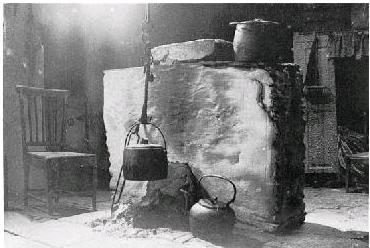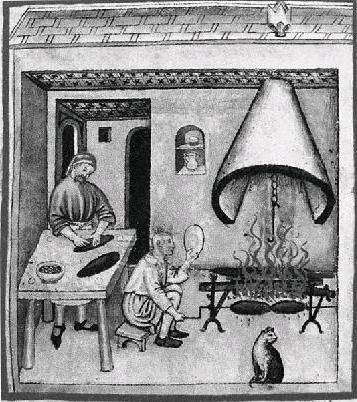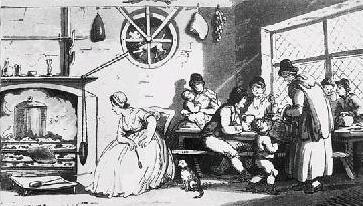Designing kitchens necessitates the integration of functional requirements, together with spaces which are pleasant to work in. Before analysing these needs it is worth looking back in time to see the antecedents of the modern kitchen. This will help to articulate and clarify the different activities needed to prepare complex meals and to realise how radically modern technology has reduced both the space and manpower needed to achieve this.
Early kitchens
The earliest kitchens, all over the world, are simply open fires, most often out of doors which is still so today in countries with a climate hot enough all the year round to make this possible.

In Britain, little is known about kitchens until Norman times. After the Romans left Britain in AD 407, the culinary arts were largely forgotten. Food was often cooked outdoors on caul- drons or spits. This was to avoid the risk of fire and to keep smells out of the houses.
The central hearth
In Saxon times, food was cooked on central hearths in large, high ceilinged halls. Smoke drifted out of unglazed windows or

a hole in the roof. Everyone ate communally on trestle tables, with the lord sitting at the centre of a table set across one end of the hall, overlooking his household who sat at tables placed along the hall before him. Later on, the lord’s table was often raised on a dais to become, literally, a high table. Close by cup- boards, i.e. boards for cups, displayed the gold and silver demonstrating his wealth. Andirons or firedogs were used to support the logs on the hearth and were later incorporated into the wall fireplaces, and became a useful way to support a roasting spit. These spits were at first operated by human turn- spits. Later, various mechanical means were developed, including clockwork devices and treadwheels turned by dogs

The advent of the chimney
Soon after the Norman conquest, the fireplace moved to the wall although the central fireplace continued right up until the fourteenth century. Moving the fireplace to an outside wall may have come about because of the impossibility of having a central fireplace in a building of more than one storey. This allowed the development of the flue to carry away the smoke up to the outside air. At first these flues were funnels cut diagonally through the thick walls to an opening higher up on the outside of the wall. Later, tall cylindrical shafts were developed. The word ‘chimney’ comes from the old French cheminée meaning the fireplace or hearth, not the flue as in current usage. Despite the enormous advantage the chimney brought to eliminating smoke from the room, a tremendous amount of heat and smells was generated from spit-roasting meat for several hundred people. So from the fourteenth century, kitchens began to be separated from the great halls.
These medieval kitchens were large with high ceilings, sometimes ventilated by louvers in the roof. A fine example of this can be seen in the Abbot’s kitchen at Glastonbury.






0 comments ↓
There are no comments yet...Kick things off by filling out the form below.
Leave a Comment